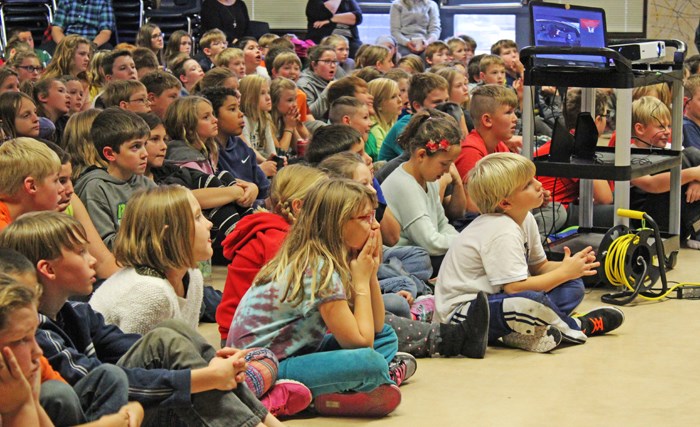The message is as simple as it is blunt. Do not be a victim; do not be a perpetrator. And do not be both.
Val Caldwell, a program facilitator for Child and Family Services of Western Manitoba, says about seven years ago the concerns parents were bringing to her started to shift toward digital technology. For the past six years she has been educating families around Manitoba and Saskatchewan about using the Internet as safely as possible.
On Monday, at the kickoff of Education Week, Yorkdale Central School hosted Caldwell, along with child safety advocates Zach and Lyle Miller, for presentations to the student body. Caldwell also gave a talk, for parents, at Yorkton Regional High School in the evening.
She does not sugar coat. The online world is a dangerous place, especially around the issue of sexual exploitation. Social media is a boon for predators and a frequent tool for bullying and revenge among peers.
It is also a world rich with positive experience and it is the reality for the generation currently coming of age and the younger children behind them. The key to avoid problems is knowledge, Caldwell teaches.
For the young kids, Kindergarten to Grade 3, the Millers presented a program called Kids in the Know.
When Zach was 10 years old he was abducted by convicted pedophile Peter Whitmore from Whitewood, a town about an hour south of Yorkton. Whitmore chained Zach to a bed on an abandoned farm near Kipling and sexually abused him for three days before the boy was able to escape. Now 19, Zach travels and tells his story in the hope others can avoid going through what he endured.
Kids in the Know is an interactive program developed by the Canadian Centre for Child Protection. It uses puppets, storybooks and activities designed to help youngsters identify risks, develop assertiveness skills, trust their instincts and talk to an adult if something does not seem right.
For the older kids, it is straight talk, open and graphically illustrated with pictures and video about sexting, bullying, suicide and possible consequences of online behaviour, personal, social and possibly criminal.
For the parents, it is basically the same talk, but slightly modified for an audience that is, perhaps, not quite as tech savvy.
It covers the technical aspects of privacy and security of social media (there is very little) and how to mitigate that with simple tips such as not using pictures of kids as profile and/or cover photos.
She goes into the language of social media and what kids are doing on there, urging worried parents to put their tweens’ and teens’ activities in context. She notes behaviour has not changed so much from her own adolescent experience, the medium has simply shifted. To illustrate, she sprinkles in personal anecdotes, such as the fact that when she was a teen Snap Chat was the local 7-Eleven (“The Sev”) in Brandon.
There is also a little neuroscience (the part of the teen brain that governs impulse control has not fully developed); some humour (#JimmyFallon, #JustinTimberlake, #hastagvideo #hilarious); some legalese (if a person is under age even possession of a sexualized picture of himself is legally possession of child porn); and some statistics (40 per cent of teenagers are sexting).
Caldwell takes umbrage with some of the language surrounding the issues, such as labeling kids “good” or “bad.” Everybody, she says, is vulnerable.
The bottom line: Social media is a reality of modern life and the key to keeping kids safe is open and non-judgmental communication.




